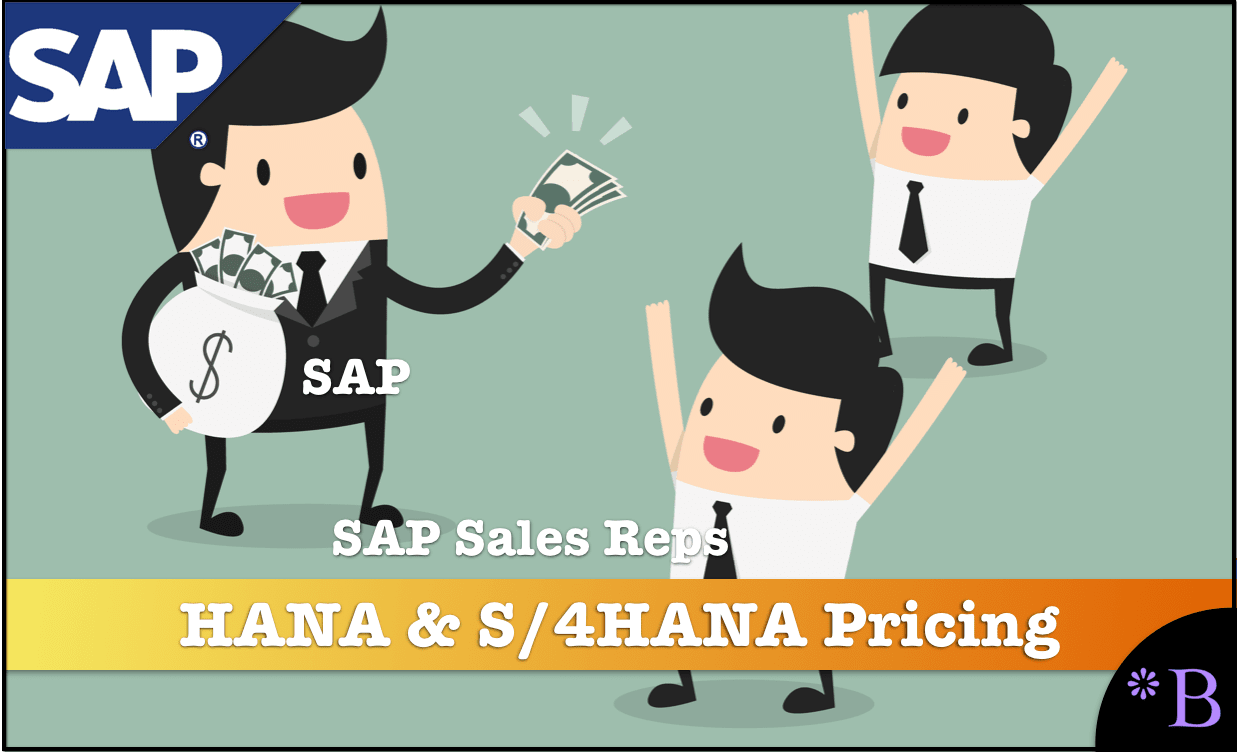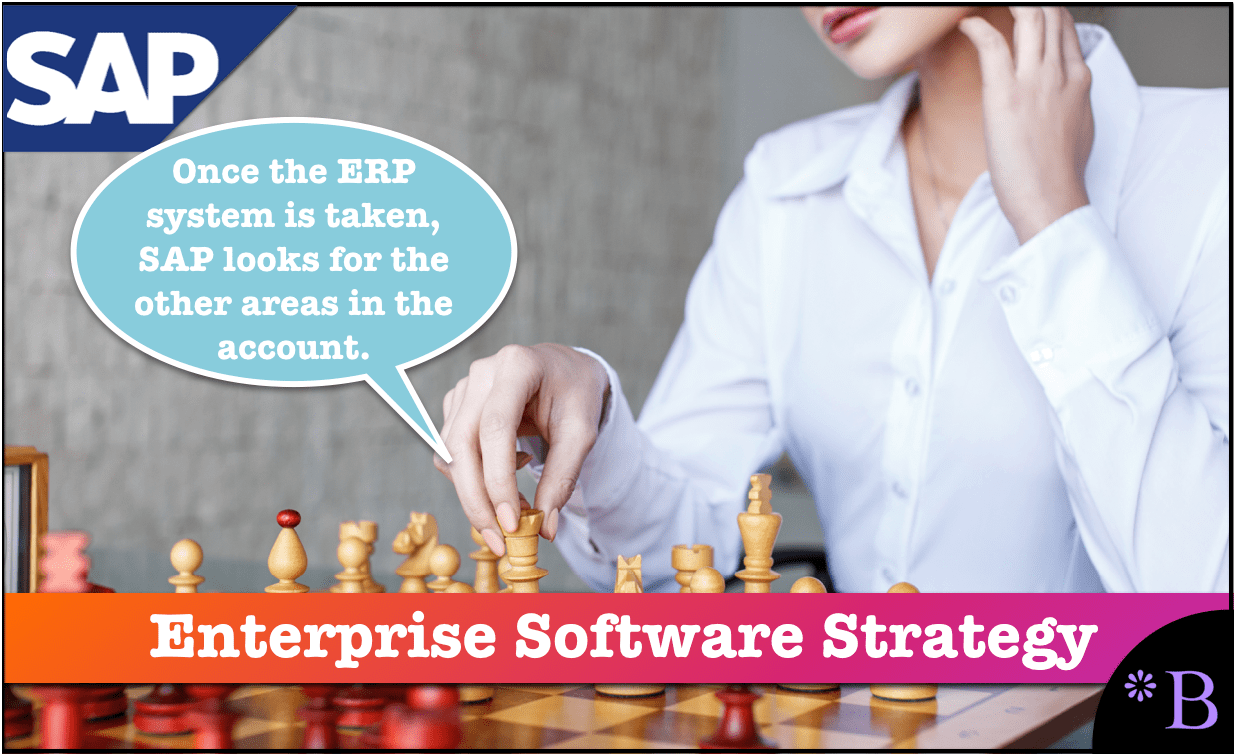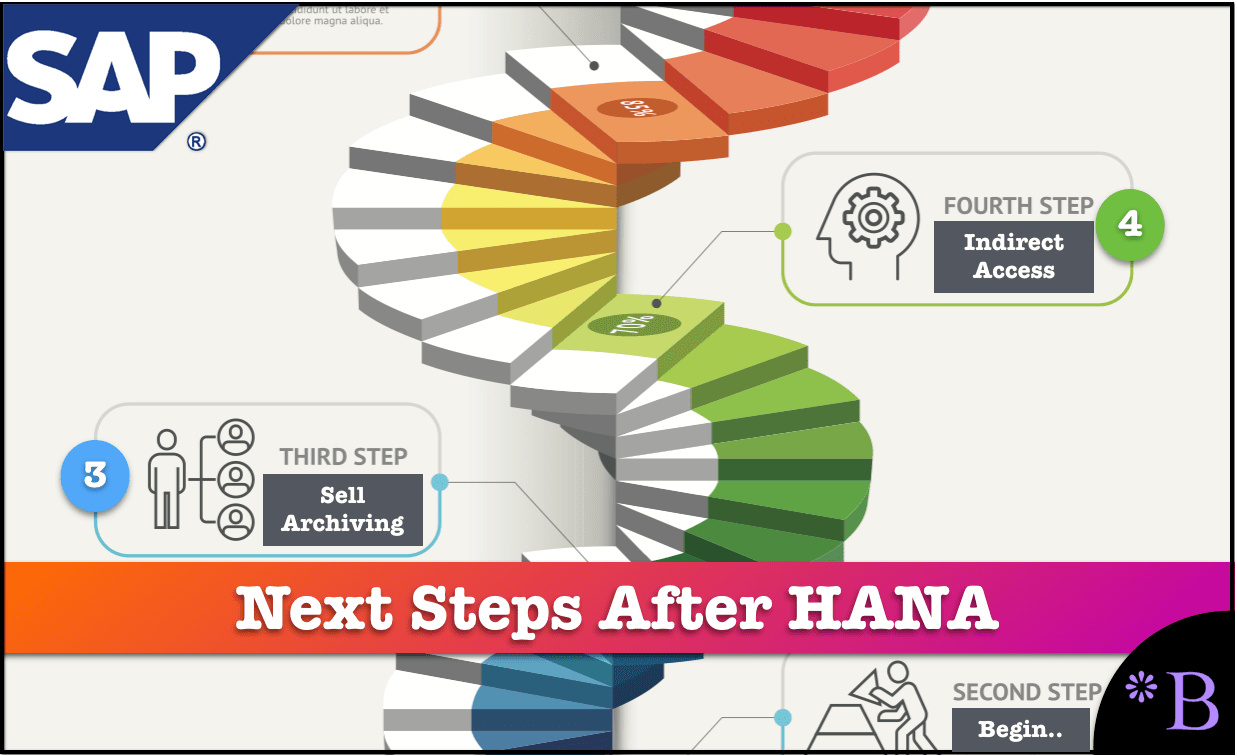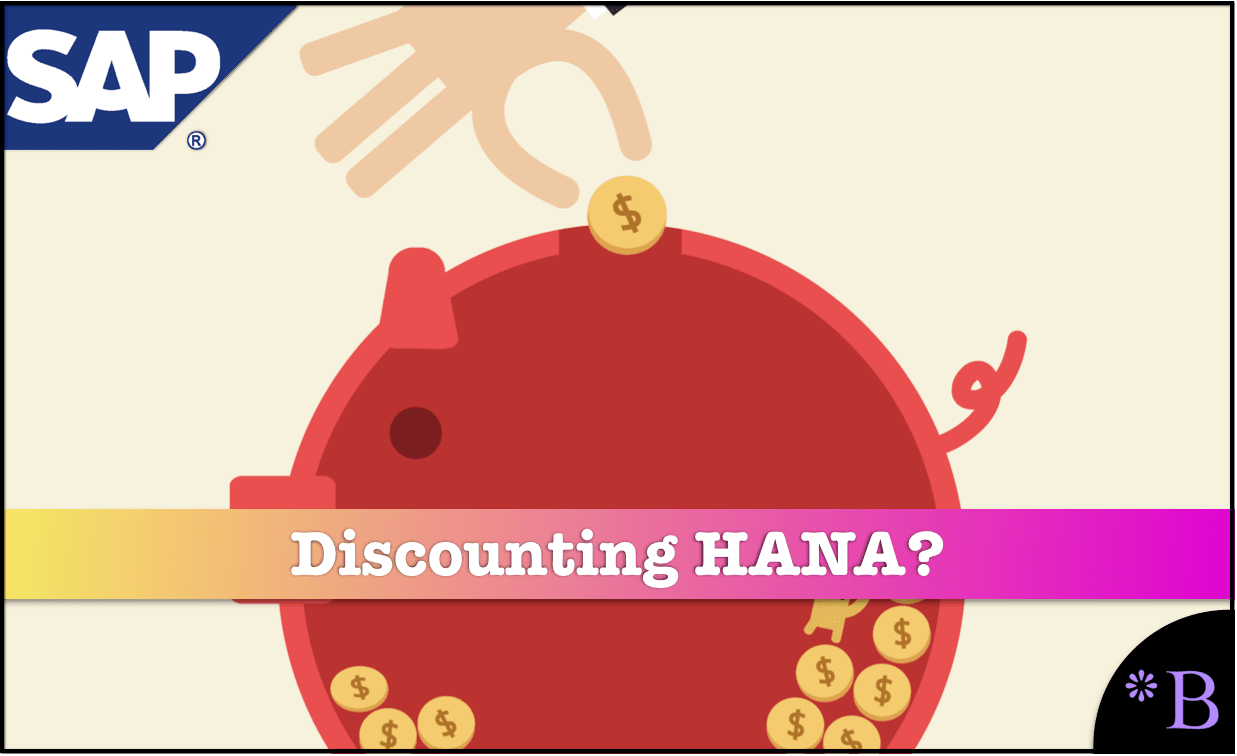How to Understand the Pricing of S/4HANA and HANA
Executive Summary
- Find out the issues with HANA and S/4HANA pricing before negotiating with SAP.

How to Understand the Pricing of S/4HANA and HANA
Introduction
This article will review the implications for HANA pricing and S/4HANA pricing. If you are negotiating with SAP, neither SAP nor the SAP consulting firms will want you to read this article. They will say SAP does not approve the information, that Brightwork is not a recommended SAP analyst, that information must come from an SAP partner, anything to get you not to use the information in this article. SAP partners and approved analysts repeat everything SAP says, which is how they stay approved.
However, one of the worst things any customer can do is rely upon information from SAP and a consulting partner when deciding.
*This article was written originally in March of 2017. However, it was updated and is current as of May 2022 to reflect current items.
Notice of Lack of Financial Bias: We have no financial ties to SAP or any other entity mentioned in this article.
- This is published by a research entity, not some lowbrow entity that is part of the SAP ecosystem.
- Second, no one paid for this article to be written, and it is not pretending to inform you while being rigged to sell you software or consulting services. Unlike nearly every other article you will find from Google on this topic, it has had no input from any company's marketing or sales department. As you are reading this article, consider how rare this is. The vast majority of information on the Internet on SAP is provided by SAP, which is filled with false claims and sleazy consulting companies and SAP consultants who will tell any lie for personal benefit. Furthermore, SAP pays off all IT analysts -- who have the same concern for accuracy as SAP. Not one of these entities will disclose their pro-SAP financial bias to their readers.
Understanding SAP’s Strategy with S/4HANA and HANA Pricing
Understanding SAP’s strategy with S/4 and HANA is critical to understanding how SAP prices these products.

SAP’s strategy is to use its dominant ERP system to dictate the database used to run this ERP system.
The Importance of Database Sizing in HANA Pricing
To keep this article to a reasonable length, we moved this important topic to its article at The Importance of Database Sizing in Pricing SAP HANA.

After HANA is Sold: SAP’s Next Steps for Follow on Sales
Furthermore, it is clear that HANA is just the first step for SAP sales to penetrate the database layer. The opening salvo was to lead with HANA. The argument is that no other database can keep up with the performance provided by HANA. SAP intends to get the application database business from its customers, which its applications reside upon, and is positioning other database products, such as those it acquired from Sybase, in its accounts as well. Sybase has been unsuccessful against Oracle, but this time, Sybase’s products are blended with SAP’s sales force and positioning.
HANA Pricing with Realistic Assumptions
A mid-size ERP instance is about 2-4TB, depending on the modules implemented, years of operations, archiving, and self-developed tables. Assuming a 50% reduction in the database footprint due to HANA, this becomes about 1-2 TB. As we stated earlier, HANA is priced per GB. 1 TB is 1000 GB. So a typical mid-sized ERP instance on HANA would be between 1000 GB and 2000 GB. SAP also has a well-known non-discount policy on HANA, making the pricing easier.
- The range of pricing for a 1000 to 2000 GB instance of HANA would be a one-time cost of roughly $6.2 million. At 20% per year, this will add a support charge of $1.24 million.
- Then hiring HANA skills into the database administration function will have to be added to that figure. And HANA skills are still challenging to find.
Important Facts Related to HANA Pricing
- HANA is quite expensive for a database, and SAP knows this. HANA also has a high implementation and maintenance cost.
- However, SAP is doing everything it can to make the initial purchase price of HANA low to obscure its actual cost. Interestingly, in the only well-known study on the TCO of HANA that Forrester published, the runtime license was used to price HANA. HANA’s runtime license is deceiving and interferes with HANA’s correct pricing. The runtime license is designed to get customers to test HANA at a very reduced price of 8% of the cost of “full” HANA.
- We created our own proportional TCO calculation of HANA, which you can read at A Study into SAP HANA’s TCO.
Customers sometimes think that this is the actual price of HANA. SAP knows how to time software audits so that they can extract the most revenue from accounts.
- The HANA runtime license is a bear trap designed to lull companies into thinking the HANA price is far lower than it is.
- And unsurprisingly, as SAP paid for the Forrester study on HANA TCO, Forrester used the runtime license to reduce HANA’s TCO. Forrester does note that it used the runtime license but somehow turned it around so that using a temporary license was considered more, not less accurate, than using the standard HANA pricing.
You can read out analysis of Forrester’s reports which are nothing more than Forrester produced marketing collateral in the article Forrester’s Fake S/4HANA TCO Study, and in the article Forrester’s TCO Study on SAP HANA.
S/4HANA Pricing and Understanding SAP’s Motivation
Once HANA has been priced, the next step is to price S/4.
S/4 is more straightforward to price in one respect as it is not based on a database sizing effort. The confusing aspect of S/4 is that it has routinely been offered for free, and most S/4 “customers” did not pay anything for S/4. S/4 is a gateway application to HANA, which is the real motivation for SAP. As we have described in detail, SAP wants to get into the database layer. This is because HANA is so expensive and because SAP sees HANA as a Trojan Horse to eventually take over the database layer and kick the current database vendor or database vendors out of their customers.
- Therefore, the pricing of S/4 could be nothing or something depending on the promotion that is run at the time of purchase.
Secondly, there is no policy against discounting S/4, and we have observed S/4 being heavily discounted. - SAP has been offering S/4 at a meager price to consulting companies so they can install S/4. These consulting companies don’t care about using S/4 for their internal operations, but they want to gain the consulting experience of S/4 to advertise this fact and get S/4 business. This is precisely what Infosys did, and it is quite unlikely that Infosys paid very much at all for S/4. When Infosys communicates to the outside world, it tells companies they strategically decided to use S/4. However, they do not need S/4.

At One Time, the Only Non-Discounted Product on SAP’s Price List
For years after SAP first introduced HANA, it was the only product SAP offered any account executive did not discount. However, this policy was changed several years ago so that HANA could be discounted. And the discounts seem actually to be high. As high as 65% of the list price. Interestingly, this was predicted by UpperEdge in an article in January 2014.
“SAP has been very aggressive in pushing and hyping the growth attributed to HANA on all of its prior earnings calls. UpperEdge has consistently observed interest from our client base in HANA but such interest has been limited to specific use cases and pilots as opposed to broad, wide spread adoption. In addition, now that HANA has had enough soak time in various customers for various use cases, feedback is now available regarding the benefits achieved relative to the cost. From what we are hearing, customers like the technology but have concerns regarding the cost. This type of feedback will likely spread within the user groups prompting SAP customers to seriously consider comparable, lower cost solutions. Could this be enough to finally drive SAP to discount HANA? We believe it is something SAP is seriously considering.”
However, the discounting now occurring with HANA is not the end of the issue. HANA has more indirect access liability than any other database because SAP claims indirect access against its customers. No other software vendor (outside of an attempt by Software AG to copy SAP) does. We covered this in the article HANA Police Indirect Access Charges.
Therefore, the HANA price can be discounted until the customer is out of compliance. SAP can use indirect access to charge more for HANA after it is installed and after the company can not do anything about it.
Therefore, what is the actual value of the HANA discount?

Understanding the Logic of Trading in Unused Licenses for S/4HANA
This is another important topic that must be addressed. Still, the problem is that software contract negotiators or firms often present this topic with little understanding of SAP applications or databases. I cover this topic in the article Should You Trade Unused Licenses for S/4HANA and HANA?
Customers Need S/4HANA?
It is tough to argue that anyone “needs” S/4HANA at this point. S4HANA comes with all types of implementation costs and maintenance costs. These costs are far higher than any potential license cost-benefit from moving to S/4HANA. Most costs associated with SAP come in maintaining SAP systems, not purchasing SAP systems. I cover this topic in detail in my book on TCO, Enterprise Software TCO: Calculating and Using Total Cost of Ownership for Decision Making.
The quoted paragraph from Snow Software continues:
“The fundamental change is that the open architecture of R/3, with the ability to employ third-party databases within the system, is giving way to a more specific database that you’ll require as part of the platform – SAP’s HANA. This is all being done with the promise of improved performance and scalability through in-memory databases.” – Snow Software
Well, Snow Software’s article does not analyze the promise of performance improvement. However, as HANA is an analytics database primarily, there is no evidence that an ERP system will run much faster on HANA due to software. Here it is essential to distinguish between the software side and the hardware side of HANA.
Hardware Improvement?
HANA combines a changed database with SSD memory (instead of a spinning disk). The performance will automatically increase because of the hardware change (SSD), but not necessarily due to the software.
The quoted paragraph from Snow Software continues:
“The faster it migrates everyone, the quicker it can stop focusing its investment in resourcing and maintaining R/3. So, in a perfect world, SAP would spend nothing on R/2 today and, 10 years from now, it won’t spend any money on R/3.
Moreover, S/4HANA revenue is heavily scrutinized by investors in SAP. The faster they see adoption of this new platform, the quicker that is reflected in the share price for SAP. SAP as a stock needs a growth leg to the story despite its strong position and cash flow.
The transition to S/4HANA requires the replacement of third-party database systems with HANA and there is a monetary uplift from doing this.” – Snow Software
Ok, this is a strange way of saying the cost will be higher.
The cost of HANA is quite high, and the expensive software is just the beginning. The following quotation will focus on support costs, but the support costs are based on the license cost. Let us continue with the quotation to see how this is a problem.
Lower Cost for HANA?
The quoted paragraph from Snow Software continues:
“SAP Enterprise support customers currently pay (by default) 22% of license costs in annual maintenance for the use of third-party databases within the architecture of their systems. SAP has steadily over the past few years increased this amount from the 15% level in advance of its migration mandate. In lieu of paying an annual 22% of license costs for your database (typically Oracle), you will pay 15% of license costs for HANA*. Additionally, as an incentive to move to S/4HANA, SAP’s extension policies may enable you to apply unused SAP licenses against a credit for the new purchase. A reduction in the software application value means reduction in overall maintenance to be paid on HANA. *Note that individual circumstances may vary.” – Snow Software
The problem is that Snow Software is making a case for HANA’s lower annual license cost. However, HANA is the most expensive database on the market. So, if you decline maintenance from 22% to 15%, the maintenance is lower, but the base is much higher than the database HANA replaces.
Secondly, HANA comes with other liabilities, such as indirect access liability, that impact different software costs, which are a whole other can of worms I have covered in part in other articles.
Not Simply Taking a Procurement or Pricing Orientation
This article is about HANA pricing. Not about HANA’s technology claims. However, one of the primary errors of those who purchase HANA is they do so without verifying SAP’s claims around HANA and without having any domain experience around HANA or S/HANA.
For instance, nearly all of the information about HANA presented in multiple videos from SAP is false. And there is a constant problem in both IT departments providing information to procurement departments. Still, furthermore, IT departments are infused with false information from SAP and from SAP consulting firms that IT departments have no way of verifying. Most IT departments that buy from SAP have an SAP bias and, therefore, have an extra incentive to accept every single claim by SAP as true, even though they have decades of examples of false claims already made by SAP, as they have the previous implementation and usage history.
Sharing This Article
Very few know the information contained in this article. Why not share this article with someone you know so they can also learn about it? It’s easy to do. Just copy this article link and paste it into your email.